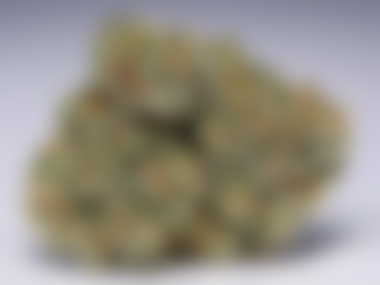As Parsi New Year, also known as Navroz or Nowruz, approaches, the Parsi community around the world gears up to celebrate this auspicious day with great zeal and enthusiasm. Parsi New Year marks the beginning of the Zoroastrian calendar year and symbolizes the renewal of life, hope, and prosperity. This day holds immense cultural and religious significance for the Parsi community, known for its rich traditions and vibrant celebrations. In this blog post, we will delve into the customs, rituals, and festivities associated with Parsi New Year 2023, shedding light on the unique practices that make this occasion so special.
The Origins of Parsi New Year
Parsi New Year, or Navroz, is rooted in the ancient Iranian festival of Nowruz, which has been celebrated for more than 3,000 years. The word “Nowruz” translates to “new day” in Persian, signifying the arrival of spring and the start of the new year. Zoroastrians, including the Parsi community in India, adopted this festival as their new year celebration, incorporating their own customs and rituals into the festivities.
Preparations and Celebrations
1. Cleaning and Decoration
Preparations for Parsi New Year begin well in advance, with families cleaning and decorating their homes to welcome the new year with freshness and positivity. Homes are adorned with colorful rangoli patterns, known as “rangoli” in Gujarati, and floral decorations to create a festive atmosphere.
2. Haft Seen Table
The centerpiece of Parsi New Year celebrations is the Haft Seen table, a traditional spread that symbolizes various aspects of life, such as rebirth, health, love, and patience. The table is adorned with seven items starting with the letter “S” in Persian, each carrying a symbolic meaning. These items may include sabzeh (wheat or barley sprouts), samanu (sweet pudding), seer (garlic), senjed (dried fruit), sir (garlic), sib (apple), and sumac (crushed spice).
3. Visiting Family and Friends
Parsi New Year is a time for reunion and togetherness, as families and friends come together to celebrate the occasion. Visiting loved ones, exchanging gifts and greetings, and sharing traditional sweets like ravo and sev are common practices during this festive period.
Traditional Customs and Rituals
1. Jashan Ceremony
On the morning of Parsi New Year, many Zoroastrians attend a Jashan ceremony at the fire temple, where priests offer prayers and blessings for the new year. The ceremony is marked by the chanting of Avestan prayers, the offering of sandalwood and incense, and the distribution of sweet treats to the attendees.
2. Wearing New Clothes
It is customary for Parsis to wear new clothes on Navroz, symbolizing a fresh start and new beginnings. Traditional attire such as saris for women and jhablas for men are commonly worn during the celebrations.
3. Feasting on Traditional Delicacies
Food plays a central role in Parsi New Year celebrations, with families indulging in a feast of traditional delicacies. Dishes like dhansak (a lentil and meat stew), patra ni machhi (fish wrapped in banana leaf), and ravo (semolina pudding) are prepared and enjoyed with loved ones.
FAQs (Frequently Asked Questions)
1. What is the significance of Parsi New Year?
- Parsi New Year marks the beginning of the Zoroastrian calendar year and symbolizes renewal and rejuvenation.
2. How long do Parsi New Year celebrations last?
- The celebrations typically span over several days, with rituals and festivities continuing throughout the week.
3. What is the Haft Seen table?
- The Haft Seen table is a traditional spread featuring seven symbolic items, each representing different aspects of life.
4. Why is cleaning and decoration significant for Parsi New Year?
- Cleaning and decoration symbolize purification and the welcoming of the new year with positivity and freshness.
5. What are some traditional Parsi New Year dishes?
- Traditional dishes include dhansak, patra ni machhi, ravo, sev, and other delicacies that hold cultural significance.
6. How do Parsis exchange greetings on Navroz?
- Parsis greet each other with “Navroz Mubarak” or “Saal Mubarak,” wishing each other a happy and prosperous new year.
7. What is the Jashan ceremony?
- The Jashan ceremony is a prayer service held on Parsi New Year to seek blessings and offer gratitude for the year ahead.
8. Can non-Parsis participate in Parsi New Year celebrations?
- Absolutely! Parsi New Year celebrations are inclusive, and many communities welcome guests to join in the festivities.
9. How is Parsi New Year different from other New Year celebrations?
- Parsi New Year combines Zoroastrian traditions with elements of the Iranian festival of Nowruz, creating a unique cultural celebration.
10. What are some common greetings exchanged during Parsi New Year?
- Along with “Navroz Mubarak” and “Saal Mubarak,” Parsis may also greet each other with “Mubarak sha” or “Ha Navroz Mubarak.”
In conclusion, Parsi New Year is a time of joy, renewal, and cultural pride for the Parsi community, who embrace their traditions and heritage with love and reverence. As 2023 approaches, let us join in the celebration of Navroz, cherishing the rituals, customs, and festivities that make this occasion truly special. Wishing everyone a happy Parsi New Year filled with blessings, prosperity, and happiness!




